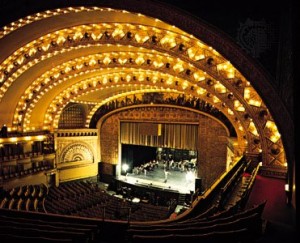“Theatre Design – The Goals of Theatre Design | Architecture.” Encyclopedia Britannica. N.p., n.d. Web. 19 Feb. 2016.
In their article, “Theatre Design – The Goals of Theatre Design”, the editors of Encyclopedia Britannica, a global educational publisher, they claim that “Theatre design is primarily concerned with enhancing the experience the audience can have at a performance [and] the specific architectural elements considered ideal for improving that experience will differ from culture to culture and sometimes even between subcultures within a given culture.” To support this claim, they describe two different categories of elements in a design, each being used for a different purpose. The two categories are “those that serve the aesthetics deemed appropriate for the art of theatre in a given culture, and those that optimize the experience of that art for the audience.” In the article they provide information on each of them, stating that “Those elements that serve the aesthetics of the art of theatre can involve everything from what the performers need to reach the artistic standards deemed proper before a performance starts to what they need to support the required amount of spectacle during performance, whether it be a bare stage or a stage with enormous movable sets and a spectacular array of props.” In contrast, “The elements that are most often discussed in terms of optimizing the experience had by the audience revolve around audience comfort”. Then they explain which areas of the theatre fit in each category. They state that, “those elements of a theatre’s design that serve primarily to optimize the experience of the audience are the house and the… ‘front-of-house’ facilities” and “those elements of the design of a theatre that serve primarily the aesthetics of theatre performance are the stage and the…backstage spaces”. They then describe each area in detail. The purpose of this article is to provide information on the purposes of theater design. This will be a useful source for someone that is interested in finding out why theaters are designed a certain way.
